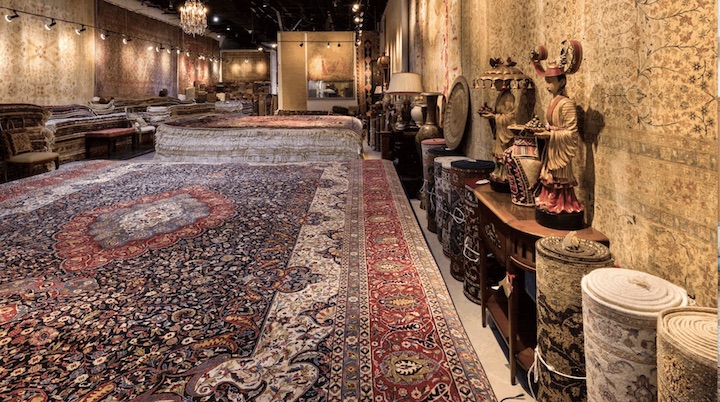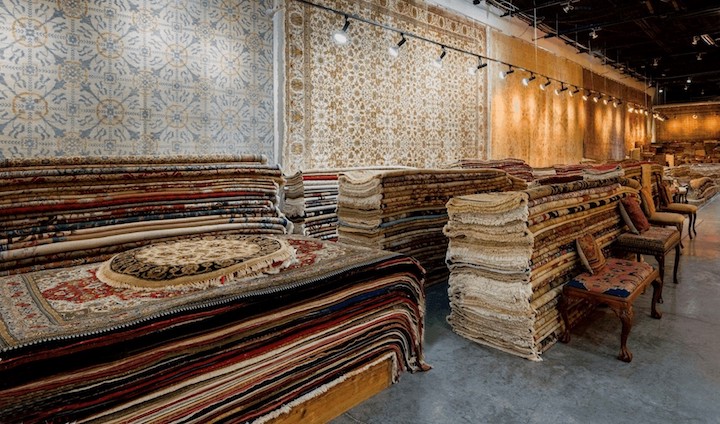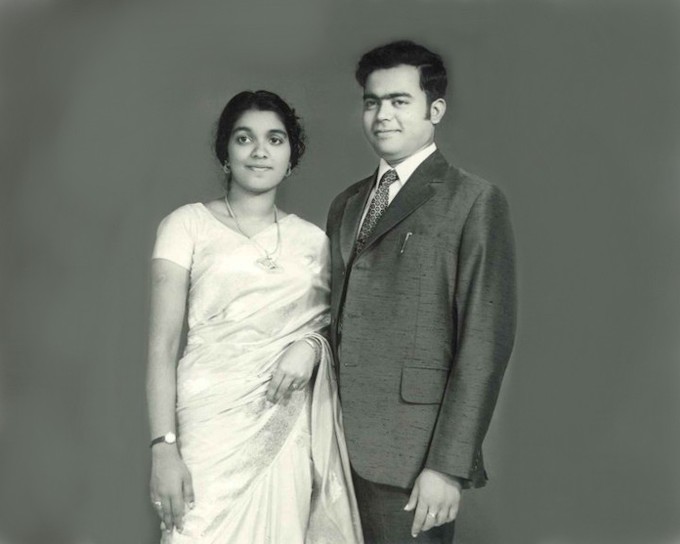Abrahams Oriental Rugs in Houston boasts a massive inventory of fine antique, semi-antique and contemporary area rugs.
HOUSTON -- Samuel Abraham has been through plenty of the rug industry's booms and busts over the course of his 40 years as a Houston fine rugs purveyor. But the past year and a half cemented his belief that the key to a thriving business is to be able to pivot to meet the needs of a largely designer clientele.
Abrahams Oriental Rugs, founded in 1974, today operates three locations that include the Houston Galleria, the Houston Design Center, and a rug cleaning business at West University. The company currently has an inventory of more than $10 million antique, contemporary oriental and collector rugs from Afghanistan, Kashmir, Russia, Kazakhstan, Nepal, Romania, China, France, India, Iran, Pakistan, Tibet and Turkey. That strong in-stock position helped Abraham not only weather the COVID-19 crisis but thrive. With one eye on the future as he approaches retirement, Abraham takes time to look back on the keys to his rug showroom's success.
"When everything closed in Houston due to COVID, our business suffered losses -- our first time in our history," Abrahams told Rugnews.com. "However, things began to change and now are continuously getting better and better," he said, noting that it helped to begin moving his inventory online during the lockdown ."Many customers including designers and the young working population started working from home through Zoom, and wanted to enhance their interiors. This increased the demand for new area rugs and also cleaning and restoration services increased. Both increased our business opportunities."
In fact, the COVID crisis coupled with recent ice storms in 2021, which froze a large swathe of the power grid in Texas and resulted in burst pipes and millions of dollars in home damage, also proved an unexpected boon for Abrahams. Indeed, his own home flooded, and he witnessed firsthand the damage to his and his clients' home furnishings and area rugs -- some in need of replacement and others of cleaning and restoration.
DESIGNER FOCUS

Building a strong designer clientele and keeping tabs on the marketplace has helped Abrahams Oriental Rugs expand its reach.
"What's unique about Houston is we frequently get victimized by hurricanes, floods or these ice storms," Abrahams said. "Surprisingly each time is an opportunity for us because we have a large number of retail clients and strong relationships with designers." Abrahams has spent decades building his relationship with designers, who now account for about 80 percent of his business. Early on he began cultivating his relationships with those customers by hosting special events and seminars. "Well-wishers told me early on, 'If you do events to benefit the public and invite designers and their customers, you will get more clients' -- and I did.
"My goal has always been to get more designers. I chose not to grow with commercial production and machine-mades. I wanted to stay in my space – and do so by driving the costs down, reducing my markup and growing my customers. "Initially our business was in a small strip center, but it so happened that the customers were designers. We've always maintained a retail showroom simultaneously with the space in the design center," he explained. "Our retail clients grew and my designer customers grew. Each time we moved the retail showrooms got bigger. Not only were they bigger, they were in better places in the town to attract better clients."
MODERNIZED RUG ASSORTMENT
When Abraham opened its first showroom in 1977 and two year later its design center location, the focus was on semi-antique and antique rugs, including Tabriz rugs from Iran, top sellers at the time, as well as silk jhum rugs from Iran and Silk Hereke rugs from Turkey. However, over the ensuing decades Abraham began expanding the showroom's range as it became more difficult to source rugs from Iran due to U.S. sanctions and to acquire Silke Herekes. So he began to cast his net wider traveling to Pakistan, India, Nepal and Tibet to establish relationships rug weavers and rug collectors.
"While we were selling finer traditional rugs, we began to select high noted rugs from various looms such as Oushak and Peshawar rugs made in Pakistan," he added. "These rugs are lighter in colors and customers preferred rugs without heavy reds, blues, rusts. We also began to sell various types of rugs from India such as the fine Jaipur rugs, Amritsar rugs, Agra rugs and the Kashmir silk and wool rugs. Hence our large collections consist of fine antique and semi-antique rugs which were imported in the earlier years. We also had a large collection of Turkish Oushak, both antique and modern."
As consumer preferences continued to evolve, over the past 10 years Abraham again pivoted and began to carry a curated selection of modern contemporary rugs. "Contemporary rugs became more popular among designers who were working with clients with lower budgets as well as young new homeowners and professionals," Abraham explained of the shift. "So during the past seven to 10 years, the decorative center showroom became a showroom of more and more contemporary rugs of finer quality. Since we carried finer rugs in the contemporary styles, we were able to maintain our established designer accounts."
The continued trend toward a newer, fresher approach to classic Oriental area designs continues and as more of Abrahams Oriental Rugs' clients update their interiors they turn to him for his selection of current designs. "The overall background and nature of the people here are more conservative in their thoughts and ideas. Yet they don’t want to go with the usual traditional rugs and after discussing with designers, instead they decide to go for transitional styles. Hence the need for transitional rugs started increasing. So today, instead of contemporary rugs, most of them are turning to middle range, which we call transitional rugs --these changes will be more long lasting."
INVESTING IN THE ONLINE RUG BOOM

Many Abrahams Oriental Rugs clients stop by to browse the growing selection of transitional area rugs.
Finally, another cornerstone of Sam Abraham's success was his embrace of the internet. Over the past several years Abrahams Oriental Rugs began investing its online capabilities and in 2021 50 percent of company's total inventory of 10,000-plus rugs is now available online. Like all rug retailers, Abraham's business has been impacted by the steep rise in online shopping.
"It's definitely affected my business," he noted. "Designers are attuned to their clients, and they see that their clients are browsing the internet and seeing more affordable rugs. From the internet, we also realized and -- designers realized -- that lighter colors were becoming more important and I needed to carry them. "Sometimes designers I worked with wanted machine-made or less expensive rugs, but we couldn't take that direction. Today if we want to grow we need to be taking the steps slowly. We don’t put the price online; we are not selling to consumers. We're doing inventory online and that is helping customers and designers see a much larger inventory than they are aware of."
 Samual Abraham and his wife Omana, who manages the Houston Design Center showroom, have found success in their fine rugs business.
Samual Abraham and his wife Omana, who manages the Houston Design Center showroom, have found success in their fine rugs business.